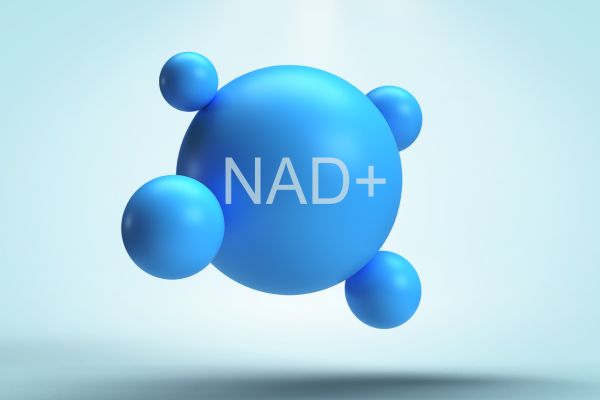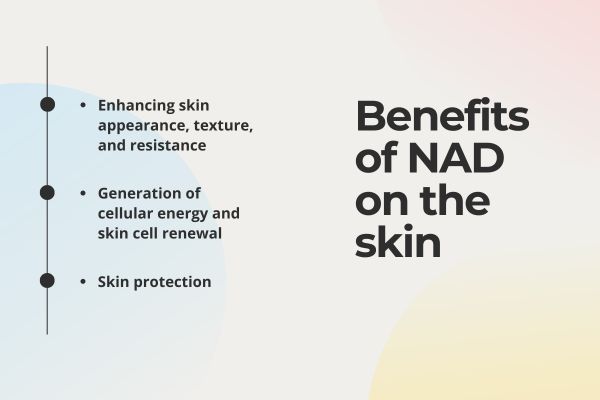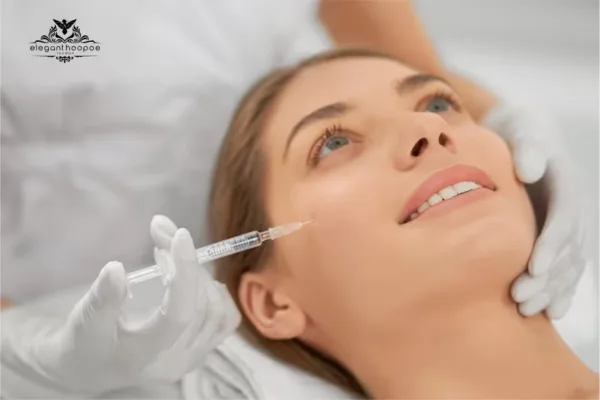What Is NAD for Skin and How Does It Benefit Your Complexion?
NAD (Nicotinamide Adenine Dinucleotide) is a coenzyme essential for skin health, playing a key role in cellular energy production, collagen synthesis, and skin renewal. Here’s why it’s gaining popularity:
- Boosts Collagen & Hydration: Helps produce fibroblasts, leading to firmer, more youthful skin.
- Fights Aging & Wrinkles: Supports skin cell renewal and protects against oxidative stress.
- Enhances Skin Barrier: Strengthens defenses against environmental damage and free radicals.
- Available in Multiple Forms: Can be taken as oral supplements, IV drips, or applied topically.
While NAD for skin shows promising anti-aging benefits, research on long-term effects is still limited. Alternatives like Vitamin B3 and a nutrient-rich diet can also help boost NAD levels naturally.
When ever-young-looking Jennifer Aniston revealed that she used NAD IV drips in an interview for the Wall Street Journal, the spike in search for all things NAD was momentous. It didn’t help the trend’s halt that Hailey Bieber enthused about NAD’s benefits on keeping up with the Kardashians, declaring “I’m going to NAD for the rest of my life and I’m never going to age.” But is NAD the long sought solution to aging? In this post, we dive deep into the biology behind NAD, examining its benefits on the skin and the safety risks you should be aware of.
What is NAD?

NAD, an acronym for Nicotinamide Adenine Dinucleotide, is a coenzyme molecule that plays a crucial role in cellular health and several foundational processes in all living cells. It is highly unstable and typically exists as either NAD+ (the oxidized state and electron acceptor) or NADH (the reduced form, and the result of NAD+ accepting hydrogen ion).
NAD levels, like hyaluronic acid and collagen decline with age, with some studies quantifying this decline as a full half reduction every 20 years. The molecule’s decline is also fueled by continued exposure to adverse environmental factors like pollution and UV radiation.
As the body’s NAD levels decrease, the molecule’s role as an energy catalyst for key metabolic processes like autophagy, making collagen and DNA, is negatively affected. The consequence is an increase in the skin’s susceptibility to inflammation, oxidative stress, and toxins – a condition that eventually leads to wrinkles and general signs of aging.
Related article: NAD+ IV Therapy Infusion for PTSD
NAD skin care benefits: Understanding the (simplified) Biology
NAD = NICOTINAMIDE ADENINE DINUCLEOTIDE
The Nicotinamide in NAD is derived from Niacin while the Adenine is a nucleotide base that plays a role in the production process of DNA and RNA. Remember (from the precious section) that NAD’s notorious instability limits its existence to two main states: NAD+ (the oxidized state and electron acceptor) and NADH (the reduced form and the result when NAD+ accepts hydrogen ions).
When NAD is converted from its oxidized state (NAD+) to its reduced form (NADH), its co-enzymic capabilities are brought to the forefront in speeding up the body’s energy production process. NADH carries the electrons it receives from NAD+ to a biochemical pathway called the electron transport chain, instigating a series of reactions that generates ATP (Adenosine Triphosphate), which is the source of energy in every living cell. Also known as the ‘fuel of life’, ATP is crucial in DNA & RNA synthesis and is needed by cells for hydration maintenance, antioxidant defenses, and collagen production.
See also: What is NAD IV therapy?
NAD Products for Anti-aging

Although NAD has been a part of the body for as long as humans have existed, it has never been scientifically studied or isolated, until recently. Modern advancements in biological science have made it possible, not only to understand the intrinsic properties of the molecule, but also to create optimal formulations for it to be used in skin care.
NAD’s incredible versatility allows it to be combined/layered with other skin ingredients for turbocharged benefits. It can be combined with peptides, vitamins and antioxidants, humectants, retinoids, ceramides, etc. Current NAD skincare products include:
- Oral supplements
- NAD injections
- NAD emollients
Oral supplements:
NAD’s biocompatibility (it fits seamlessly with the body as it is already a constituent) means it can safely be taken as an oral supplement, and subjected to the digestive process. Some NAD precursors like nicotinamide riboside and nicotinamide mononucleotide are available for oral ingestion and are later reconverted to NAD when they enter the body.
NAD injections:
NAD can be administered into the bloodstream via an intravenous (IV) drip. But unlike oral supplements that must pass through the digestive system, this method feeds NAD (or its precursors) directly into the blood – within reach of skin cells. It may not however increase the potency of results. With IV drips, the body takes up the role of judge and jury and will direct the molecule where it needs it the most, which may not be adjudged to be the skin after all.
NAD emollients:
From serums to creams, facials, and chemical peels, NAD precursors are increasingly gaining application as additives in many topical skin care products. Although smearing NAD on the skin may not be as effective as injections and supplements, its stabilized form can still penetrate the skin barrier, delivering the coenzymes to the underlying cells.

Is NAD good for skin?

NAD’s benefits on the skin are mostly a direct consequence of its outsized role in the production of ATP and its overall powering of biochemical reactions that affect cellular health. Some of these benefits are:
- Enhancing skin appearance, texture, and resistance
- Skin protection
- Generation of cellular energy and skin cell renewal
Enhancing skin appearance, texture, and resistance
NAD increases the synthesis of fibroblast cells – the spindle-shaped connective cells that secrete collagen proteins. The relationship is as follows: higher NAD levels translate to the synthesis of more fibroblasts, which translates to the secretion of more collagen.
| Higher NAD levels = More fibroblasts = More collagen |
Among its numerous benefits, collagen is known to help new skin cells grow, promote the replacement of dead skin cells, enhance the skin’s structural elasticity, and improve skin hydration. In visible terms, collagen slows down your facial wrinkles and makes your complexion clearer and more even-toned.
Skin protection
Besides facilitating the production of natural antioxidants in the body, NAD also has incredible antioxidant properties of its own which it uses to protect the cell membranes from harmful free radicals. Free radicals, if unchecked, can lead to contact dermatitis, cancer, heart disease etc. Furthermore, NAD also plays a role in the manufacture of certain lipid molecules, i.e. ceramides, which are essential for subcutaneous water retention and the maintenance of protective barriers against external environmental influences.
Generation of cellular energy and skin cell renewal
NAD provides support for the cellular processes that promote skin cell renewal – a monthly ‘event’ requiring a significant amount of cellular energy to execute (remember, NAD is an enabler of the production of ATP, the cell energy source).
The process of skin cell renewal is quite simple: surface skin cells are exfoliated away and replaced with newly created sub-surface skin cells that are ‘mature and specialized’ for surface conditions. This process is continuous and will naturally decelerate with age and reduced NAD levels. In addition to providing the necessary energy for cell renewal, the introduction of fresh NAD helps the new skin cells to better mature and specialize.
NAD: Safety risks, alternatives, and future projections

Although NAD is considered safe for use, there is a striking absence of robust clinical trials and long-term studies at this time. With this in mind, we advise that any usage is moderate and strictly under the supervision of a licensed health practitioner. Given the lack of topical research, the potential risks of using NAD are hardly worth it, when there are other well-established and proven alternatives like vitamins A, B3, C, and AHAs.
Vitamin B3 is interesting as it has an incontrovertible relationship with NAD: its three main forms: niacin, nicotinamide (also referred to as niacinamide), and nicotinamide riboside are viable NAD precursors that are converted to NAD through biochemical reactions in the human body. You can also increase your NAD levels by opting for foods like avocado, broccoli, and cabbage that are rich in amino acids (yet another NAD precursor). Moreover, recent studies have linked exercise with elevated NAD levels, presenting yet another route to organically boosting your NAD levels.
As biotechnology advances, the expectation is that safer and more innovative NAD products will flood the market, even as ongoing research provides more information on the safety and long-term viability of current products.





